May Is Here!
As John Forti so wisely reminds us, it is a time for celebrations. The weather is finally warming up in the temperate zones of the Northern hemisphere. May in my garden brings lushness. The aura of fresh greenness prevails. The light takes on a different quality. Days are longer and there is more time for gardening. Flowers are blooming and deciduous trees are leafing out. Surely, that is an excuse for a garden party!
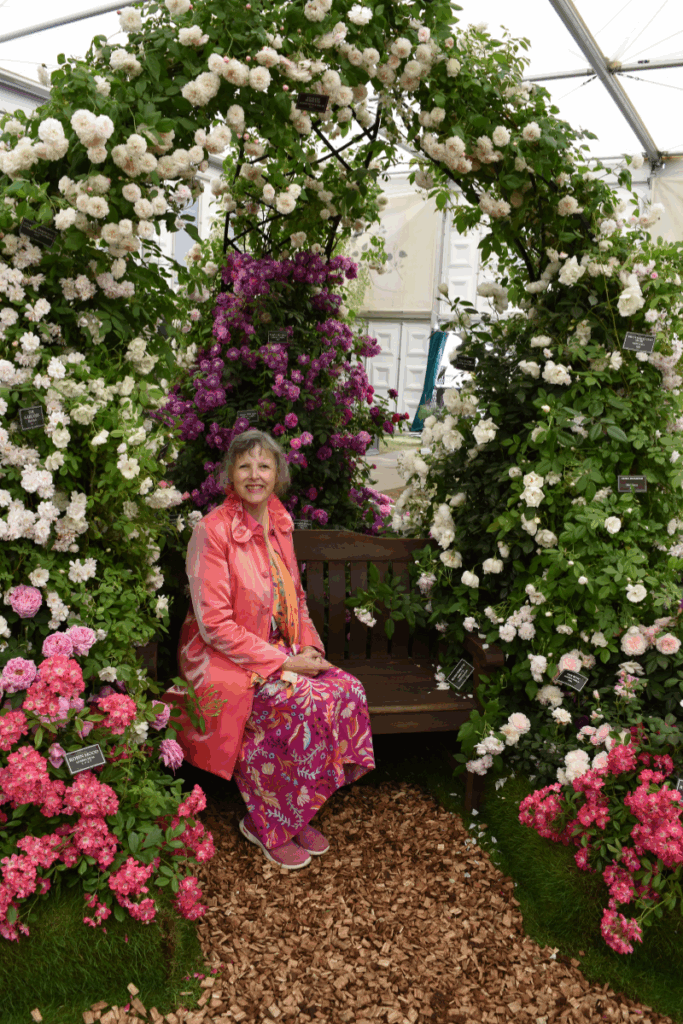
We hope you’ll join us for our upcoming Open Garden Day at Northview—Thursday, June 5th from 10:00 AM to Noon. Stroll the gardens in their early summer glory and enjoy a morning immersed in beauty and inspiration. Admission is $20 per person, cash only.
Garden Travels
This May, I will be back in England at the world-famous Chelsea Flower Show. I am lucky enough to go every year, and will report back next month on some of the trends that I see and observations that I make.
April has been a busy month for garden tours. There was a Hardy Plant Society tour that just focused on shade plants, where each participant went home with one or more baby shade plants to try. Most of the other tours primarily featured daffodils.
Luckily, the early tulips were in bloom for our Northview Garden Day—thanks to all of you who came—I will be letting you know future tour dates. The Tulipa sylvestris patch was particularly spectacular this year. It made me so happy!

Ask Jenny Rose
My email inbox is always full of questions about gardening, garden books, and design questions—basically, the topics that I cover in this newsletter. I try to be diligent about answering these questions individually, but then after I did a phone-in YouTube show for Studio2 at WHYY, our Philadelphia-based NPR station, I realized that those same questions may be useful to other readers.
So, here we go with a new section in the newsletter—
Ask Jenny Rose
We are kicking off with a question from Helene in Florida:
Plant of the Month: Narcissus bulbocodium – Hoop-Petticoat Daffodil
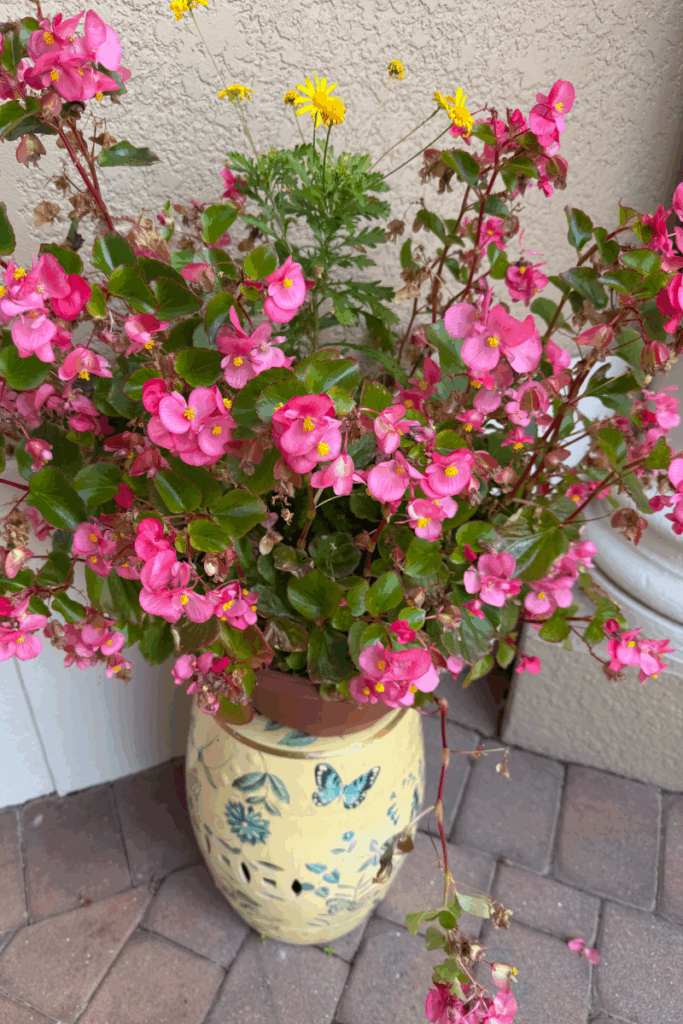
She asked, “How do I make this pink begonia look not so leggy? Do I cut the flowers off? Will it flower again if I do that?”
My answer: Trim the longest shoots down, a couple of the longest at a time. Then in a couple of weeks trim another one or two. I would take them down to just above a node, where the leaves or side shoots come out of the main stem. Keeping up with the trimming will give it a compact shape over time. By the way, it looks very healthy. Good job!
This advice applies to many multi-stemmed plants. Nip the ends back to encourage a bushier pattern of growth. By doing this, you are encouraging the dormant side buds to begin growing.
Please feel free to send me a photo and ask a question to be included in a future email newsletter. I will just use your first name and state or country unless you wish to be anonymous. Keep those questions coming.
May Blog Post: A Mother’s Day Tradition – Planting Seedlings Out
When I moved to Pennsylvania many years ago I was told that American Mother’s Day – the second Sunday in May – was the time to plant out your summer seedlings. I still keep to that tradition in honor of my mother-in-law, and grandmother-in-law. I make sure that on Mother’s Day I think of the lovely mothers that I have known.
However, getting those seedlings out of the house safely is hard. The baby seedling was grown in cushy conditions inside and has to go out into the crazy outdoor world. If I were anthropomorphizing my plant babies I would see a parallel with human children.
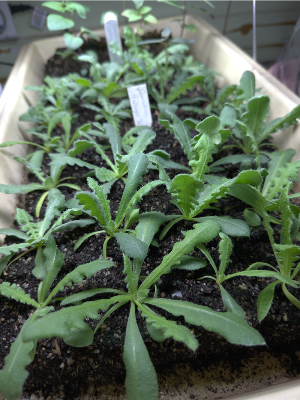
Plant of the Month: Geum, aka Avens
Geums, also known as avens, are a group of perennial plants that bloom in May. Flower colors include orange, red, yellow, blush, and pink. I grow geums for their good leaf quality that remains fresh all summer, and then their burst of late spring and early summer blooms. The cup-shaped flowers are loved by pollinators. Cut flowers last well in water. There are various species and cultivars that make good garden plants.
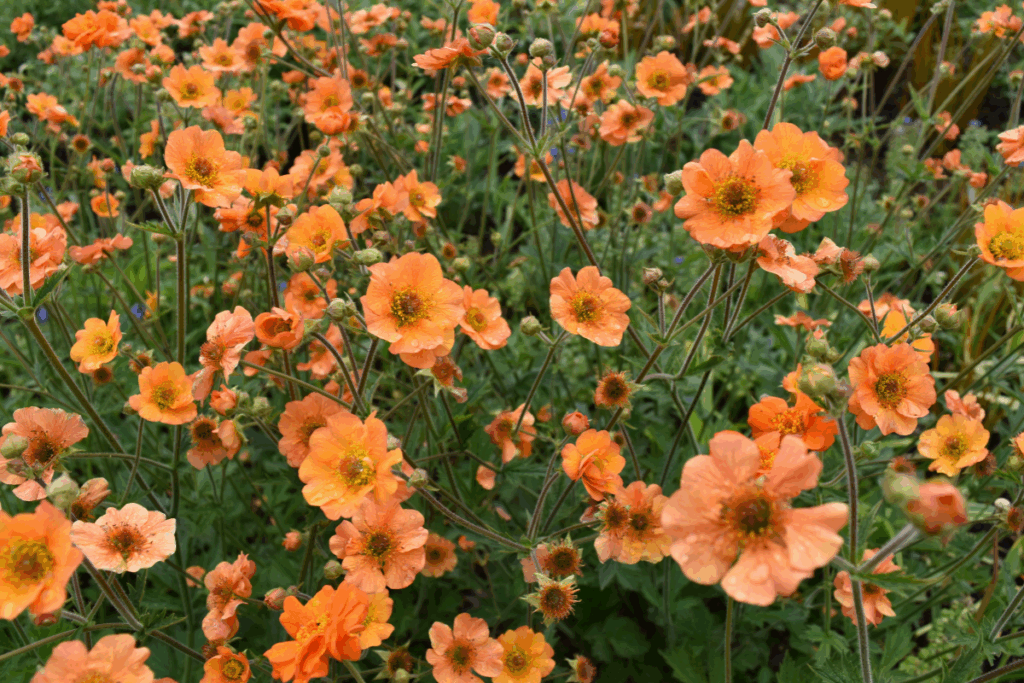
| Plant your geums in moist soil that is not wet in the winter. Some types are shade lovers and others can take part to full sun. All of them need a position out of the hot late-day sun, especially in hot climates. The hardiness range is USDA Zones 3/4 to 7/8, depending on the variety. |
There are dwarf cultivars like the orange-flowered Geum coccineum ‘Koi’ that grows to about 10”. Larger cultivars include the reddish Geum ‘Mrs. J. Bradshaw’ and the yellow ‘Lady Stratheden’, which have low foliage and then airy flowering stems that rise to about two feet tall. The Geum that has taken the gardening world by storm is ‘Totally Tangerine’. It is a great garden plant that is seen in all the best gardens! It is taller than the others and bulks up well when conditions suit its growth. Not surprisingly, it is orange in color.
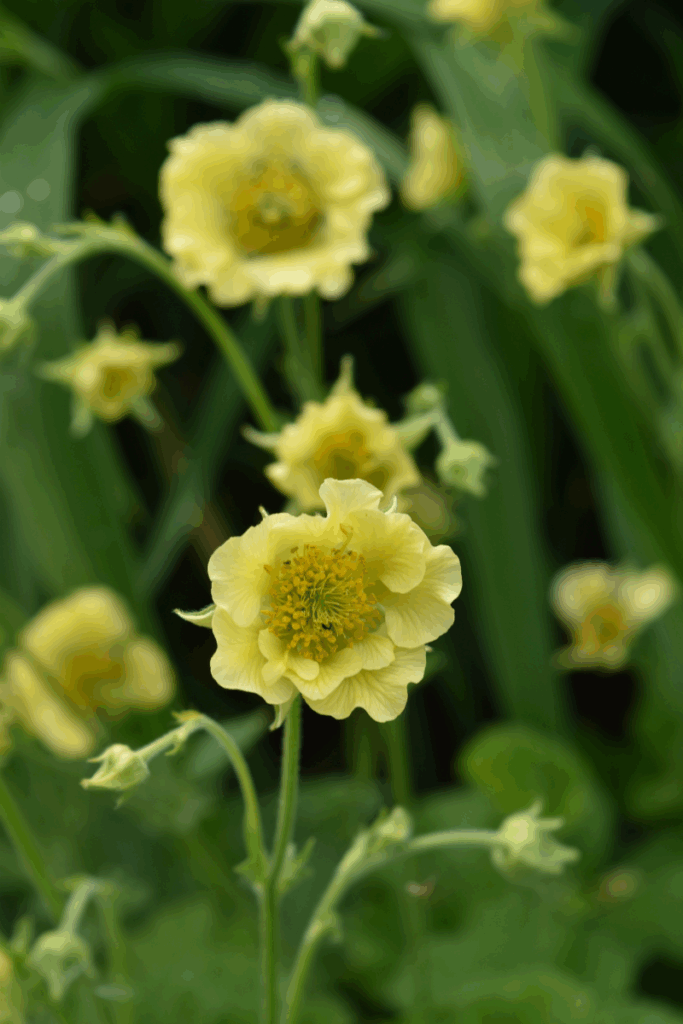
Another series to look for is the cocktail series with delicious names like ‘Banana Daiquiri’ and ‘Mai Tai’. I was also taken by the awfully named ‘Pretticoats Peach’, which has ruffled flowers with pinkish petal edges and a yellow center that ages to peach.
On a slightly different note, there is a geum with a different look, Geum triflorum, that is native to the West and Midwest. Its common name is Prairie Smoke. I grow it successfully in my Pennsylvania garden in a slightly raised berm that is topped with small-scaled gravel.
It gets its name from the fluffy seedhead that vaguely resembles smoke. The flower that precedes the seedhead is nodding, bell-like, and pinkish.
Planting companions that bloom at the same time as geums and look fabulous together are tall alliums, thalictrums, and catmint (Nepeta).
Book of the Month:
The Heirloom Gardener
The Heirloom Gardener has the look and feel of an old book although the writing and examples are right up to date. The text by John Forti is enhanced by line illustrations by the artists Mary Azarian and Patricia Wakida.
This book follows the methodology of some of my favorite books—a series of alphabetically arranged mini-essays that you can dip into and enjoy in bite-sized pieces. Since I am known for reading books backwards, one of the first essays that caught my eye was “Wattle” (meaning a woven fence made from twigs and branches). Wattle structures can enclose beds or delineate boundaries.
I continued through “Quince,” to “Nasturtium,” and on to “May Day,” where the quote at the top is taken from. John reminds us of the wonderful tradition of “hanging May baskets on the doors of loved ones.” A May basket is a flower-filled basket of blooms from your garden. It is a tradition that I would love to see revived.
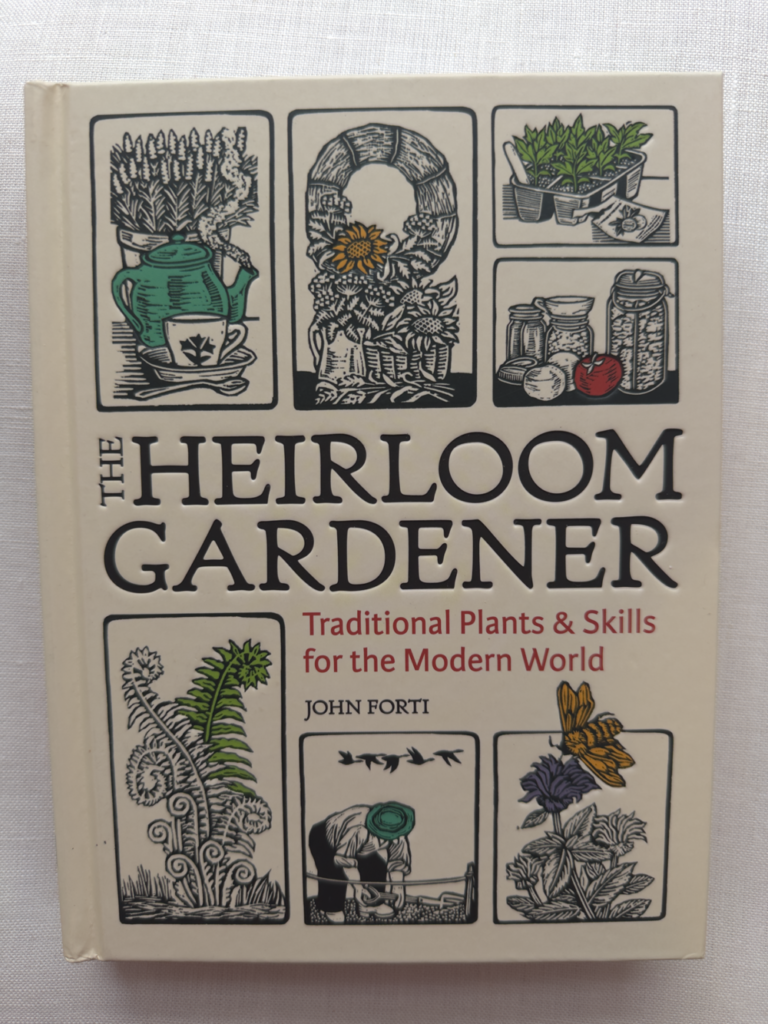
John seamlessly blends folklore with modern customs and updated ways that rely on traditions. He points out that some of the old ways resonate with our need to reconnect with the earth, the plants, and seasons. There are sections that concentrate on one particular plant, like sage and milkweed. Other parts are theme-based like kitchen craft and dooryard gardens. The illustrations are interwoven with the text and add immensely to the enjoyment of the book.
This is a reassuring but also thought-provoking book. How can we live a life based on plants that allows us to live lightly on the land? John provides many answers but leaves the door open for your own solutions. The snippets of history added to my pleasure of reading.
(In full disclosure, I was sent a copy of this book to look at because I am a Timber Press author, but the feelings and thoughts about this book are my own.)

In Case You Were Gardening…
The Flowers That Bloom in the Spring – April 10, 2025
Munstead Wood – Gertrude Jekyll’s House and Garden – December 16, 2024
A Rain Garden for Every Garden – August 28, 2024
If you like this newsletter, please tell your gardening friends about it. It is easy to subscribe by contacting me via my website.
If you would like to see photos of my garden at Northview and images of my garden travels, please follow me on Instagram @NorthviewGarden and @JennyRoseCarey
Bye for now,

PS: If you want to hear more of my thoughts and support me in what I do, check out my books. Glorious Shade celebrates the benefits of shade and shows you how to make the most of it. This information-rich, hardworking guide is packed with everything you need to successfully garden in the shadiest corners of a yard.The Ultimate Flower Gardener’s Guide gives home gardeners the confidence they need to create the flower-filled garden of their dreams. Instead of concentrating primarily on color, it brings flower shape and texture to the fore, helping homeowners make plant choices that come together in an aesthetically pleasing way.
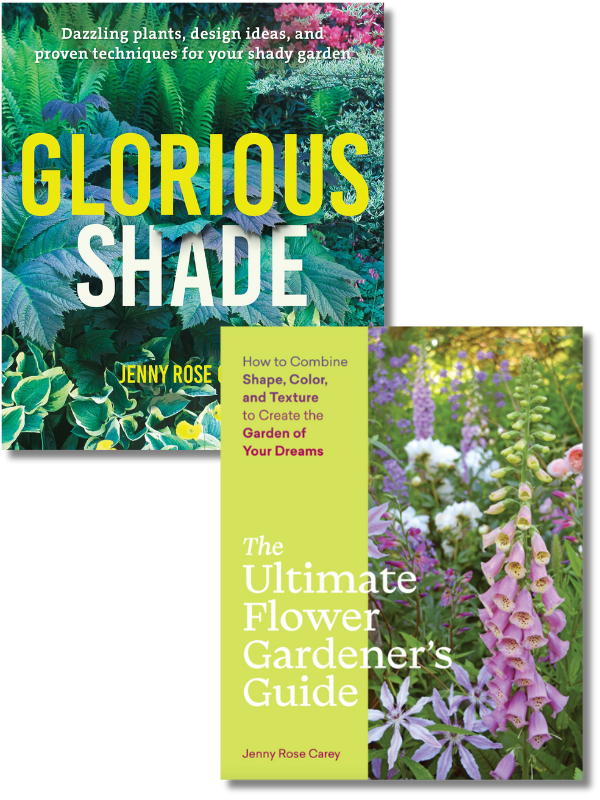




Leave a Reply